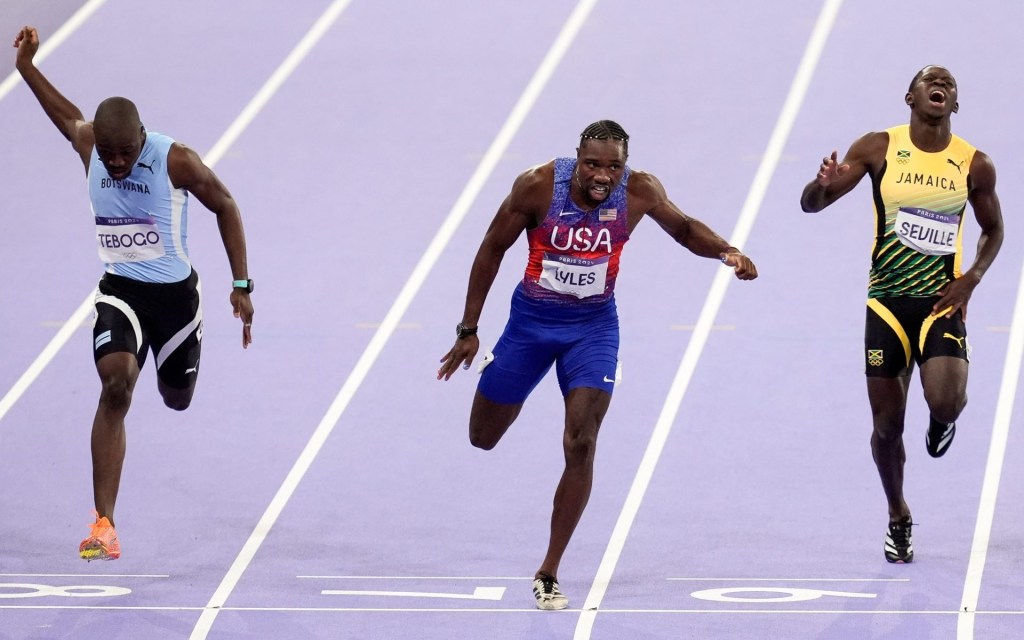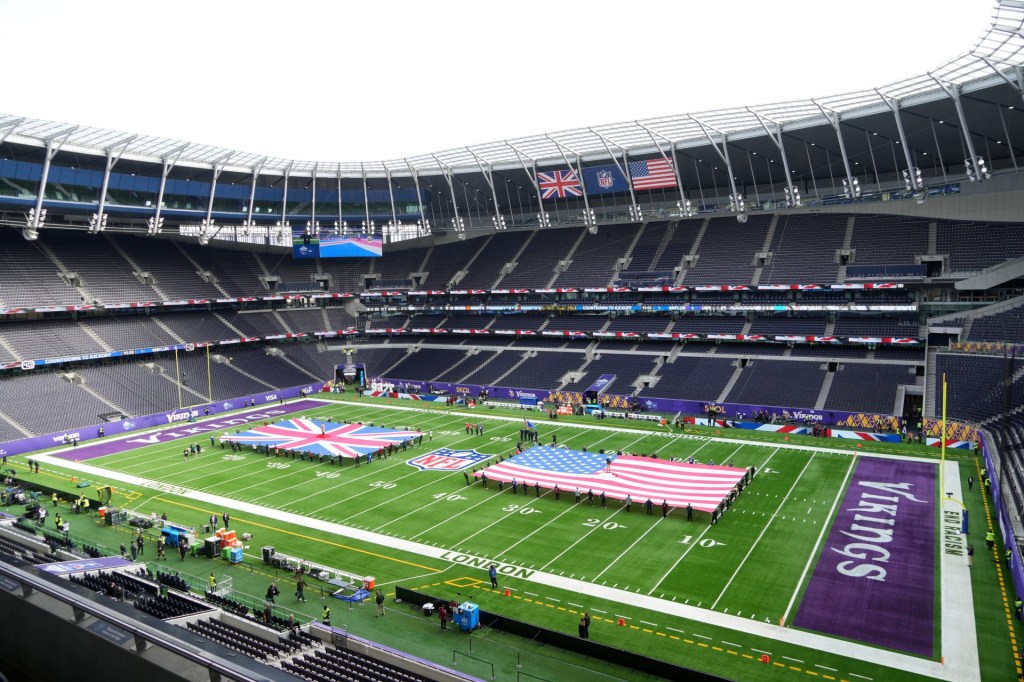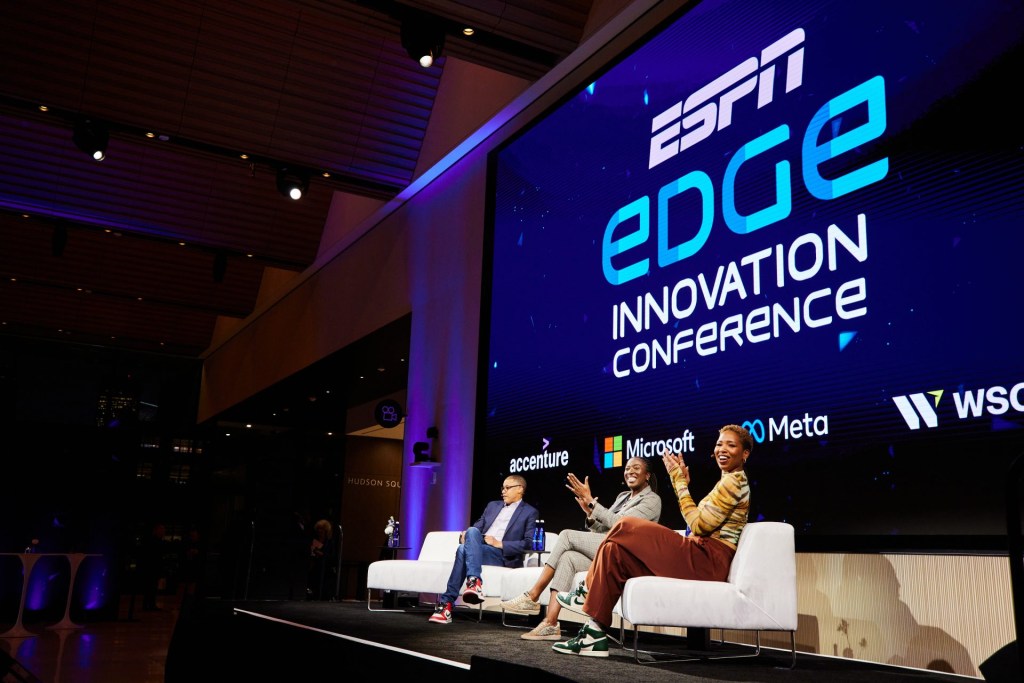Haas team principal Guenther Steiner has never been shy about explaining the economic realities of his team, which has nowhere near the brand cache of Mercedes or Ferrari.
“Now, having an American sponsor and the owner [Gene Haas] being American, we can take more of that identity on,” Steiner told me in November. As of this year, his team is officially known as MoneyGram Haas, after the Dallas-based payments company inked a title sponsorship with the racing team. Steiner purposefully chose an American company.
He was in Las Vegas when we spoke, which will host an F1 race for the first time in three decades, and the hype was already strong.
He was approached by “at least five to 10 people” who recognized him and wanted to talk F1. “The race is in a year, guys!”
The racing series notched record U.S. viewership in 2021, and then beat its record by 28% last year with an average of 1.2 million viewers per race across the Disney-owned ESPN, ESPN2, and ABC.
F1 is sticking with those networks for its U.S. broadcasts in a new three-year deal at a huge price increase: Disney paid $5 million per year through 2022, but will pay a reported $75 million to $90 million annually starting this year.
American brands are buying in, too: F1 teams struck 161 deals with U.S. companies in 2022, up 66% from 2020.
The Williams team, which finished 10th out of 10 in 2022, is taking a different route, but one with the same goal by bringing on Logan Sargeant, F1’s first American driver since 2015.
In November, I asked Jost Capito, Williams’ team principal at the time, about what that will mean for Williams’ brand and popularity, and he was quick to point out that just having an American on the team won’t be enough to truly excite the U.S. audience: “You need a successful, performing American driver.”
Williams has a ways to go on that front, but Capito was heartened by F1’s new cost cap regulations, which began with a $145 million cap in 2021, and will be $135 million from 2023 to 2025. Prior to that, teams like Ferrari and Mercedes treated F1 as a marketing and R&D expense, and blasted past other teams.
With every team likely to spend up to the cap, “now it will be an efficiency race,” said Capito.
New engine regulations will further upset the status quo in 2026, as F1 looks to steer toward more sustainable practices. F1 teams typically partner with manufacturers or even rival teams to supply their engines, and the coming changes have opened the door for new entrants.
Red Bull is switching from Honda to Ford at that time, giving it a solidly U.S.-associated brand to pair with its namesake energy drink company, which is headquartered in Austria but has the largest U.S. market share in its beverage category. Audi is also joining, after buying a stake in the Sauber team. Porsche is still looking for a pathway in after being spurned by Red Bull.
The Challenger
But for all of that brand alignment, no F1 team can match the American-ness of the group trying to become F1’s 11th team: Andretti Cadillac.
Mario Andretti is an American racing legend, winning the F1 Drivers’ Championship in 1978, and also building an impressive resume in IndyCar and 24 Hours of Le Mans. He and his son, Michael Andretti, run Andretti Global, which has a presence in IndyCar, Formula E, and others.
Andretti has pursued an entry into F1 for years, unsuccessfully bidding on the Sauber team in 2021. Now, with deals in place with Cadillac to be the main manufacturer, Renault to supply engines, and Guggenheim Partners to provide financial backing, Andretti just needs approval from F1’s governing body, the FIA.
While new entrants must pay $200 million to offset prize money dilution to other teams, that has not been enough to persuade most of them that it would be worth having Andretti around. Some have suggested that the fee should be at least $600 million.
It’s easy to see why an extra two cars on the grid indefinitely would not be worth a one-time payment for many teams. However, it’s also possible that some are wary of welcoming in a group that doesn’t have to bankshot its way into an American identity.
“An American manufacturer behind an American team with an American driver is going to be the biggest story of the year,” Michael Andretti said in January.
The Long Road Ahead
The rise of F1 is largely attributed to the hit Netflix show “Drive to Survive,” which masterfully integrates the interpersonal dramas of big egos playing a high-stakes game with the drama on the track.
“I’m pretty convinced we are just scratching the surface of this market. We are just looking into the future,” said F1 president Stefano Domenicali at last year’s Miami Grand Prix.
I was there too, to witness F1’s big coming-out party in the U.S. While the series has raced in Austin, Texas, off and on since 1908 (and most years since 1958 with a few gaps), Miami was a scene that transcended the race itself, with celebrities, musical acts, and a wide swath of brands descending on the hot new thing in American sports.
In particular, I noticed that crypto — this was in the heady boom times of mid-2022 — had a particular allegiance with F1. The official title of the race remains the Crypto.com Miami Grand Prix. It’s fair to wonder if F1 will suffer a similar, if less dramatic fate to blockchain assets as the hype fades. How popular will “Drive to Survive” be in five years? Can a new set of drivers win over fans the way Lewis Hamilton and Max Verstappen have? Will NASCAR among others eat into F1’s U.S. market share?
F1 has a lot going for it that crypto doesn’t, starting with the vested interests of numerous major auto manufacturers. It’s a sport that more and more people find accessible, due to “Drive to Survive,” but which also rewards the obsessives, who study the tactics of drivers and the physics of the vehicles — each of which is custom-designed by its team within specific parameters.
And then there’s Las Vegas. The city built on spectacle will host its first Grand Prix in three decades in November, and it may be one of the most lavish sporting events in history.
Caesars Entertainment is offering an “Emperor Package” for $5 million which accommodates 12 guests with around-the-clock butler service, an outdoor Zen Garden with a Japanese onsen tub, media room, billiards table, full bar, outdoor kitchen, a private entrance and elevator, sauna, and private spa treatment room.
Wynn Las Vegas is offering a similarly lavish $1 million package.
MGM CEO Bill Hornbuckle said in August that his company will purchase between $20 million and $25 million worth of F1 tickets to offer in packages, which could reach six digits.
F1 anticipates the event will generate $1.3 billion in economic impact — more than double the expected impact of the Las Vegas Super Bowl in February 2024 — and aims to earn $500 million in revenue from the event.
“The vibe that is already in the city is really hard to describe,” said Capito. “It’s unbelievable. Everybody seems to know about Formula 1.”
At the speed F1 is traveling, nothing is certain. The risks and rewards are bigger than they have ever been. When the engines start in Bahrain, teams will be racing to capture the hearts and minds of an American audience that is more tuned in than ever before.

















